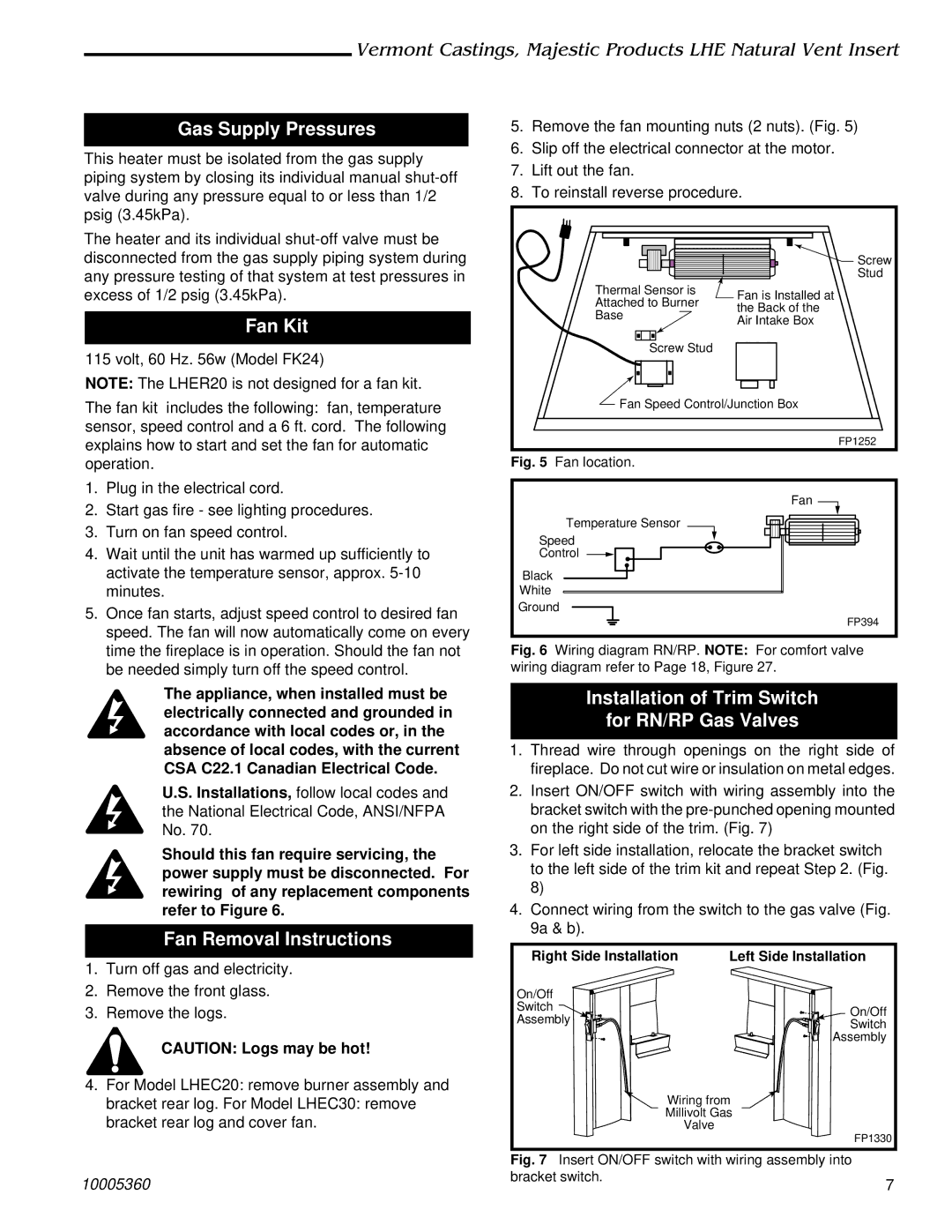LHEC30, LHEC20 specifications
Vermont Casting has long been recognized for its commitment to quality and craftsmanship in the world of home heating appliances, and their LHEC30 and LHEC20 models exemplify this dedication. Both units are highly praised for their advanced features, efficient heating capabilities, and timeless design, making them popular choices for homeowners seeking warmth and comfort.The LHEC30 is a powerful heater, showcasing a robust construction that utilizes cast iron, known for its excellent heat retention properties. This model is designed to deliver exceptional performance while maintaining an aesthetic appeal that blends seamlessly with traditional and modern décor. With a heating capacity of up to 3,000 square feet, the LHEC30 is perfect for larger spaces. It efficiently distributes heat through a radiant heat system, ensuring an even warmth throughout the room.
The LHEC20, on the other hand, is tailored for smaller spaces, with a heating capacity suitable for areas up to 1,600 square feet. Despite its smaller size, the LHEC20 does not compromise on performance. It offers many of the same advanced heating technologies found in its larger counterpart, making it a versatile option for various home sizes.
Both models feature Vermont Casting’s advanced combustion technologies, including secondary combustion, which significantly increases efficiency and reduces emissions. This feature ensures that the wood is burned more completely, resulting in less smoke and cleaner air. Additionally, an easy-to-use air control system allows users to adjust the burn rate according to their heating needs.
Another characteristic that sets these models apart is their decorative cast iron façade, available in multiple finishes to complement any interior style. The large glass doors provide a beautiful view of the flames, enhancing the cozy ambiance of any setting.
Vermont Casting’s LHEC30 and LHEC20 also prioritize user convenience with features such as easy access for cleaning and maintenance. The efficient design makes them not only functional but also a stylish focal point in any room.
With their blend of efficiency, elegance, and innovative technology, the LHEC30 and LHEC20 models by Vermont Casting stand out as excellent investments for homeowners looking to add both warmth and style to their living spaces. These heaters exemplify how practicality can meet aesthetics, making them a central part of any home heating solution.

